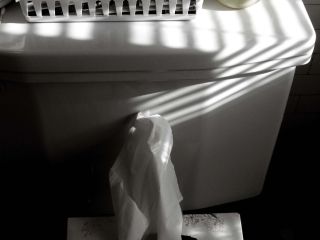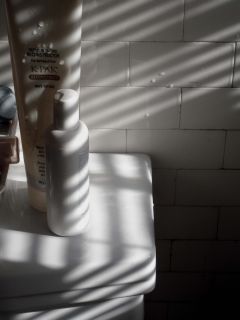January 25, 2006
Contrast

Once, Teja Cole, perhaps upon his return to Nigeria and its colors, or perhaps when he was still Abdul-Walid of Acerbia and New York City, wrote about his compassion for John Updike -- the master, implanted in Pennsylvania, with only suburban folly for artistic inspiration. Teja said it even better than V.S. Naipal would have, but, as is often the case, I can't find his quote
When I saw the black and white photos of Seydou Keita in the Sunday New York Times , I bemoaned my suburban setting. Keita, a studio photographer in Bamako, Mali, took portraits of Mail's growing urban class in the 30's and 40's -- his clients commissioned these photos to send back to their relatives in the country. Keita's portraits thus document "people on the uneven edge of modernity"
The photos shown in the Times are dramatic - riveting, high contrast, large black and white prints (produced from his negatives), of men and women in varieties of native and modern costume, taken before patterned backdrops worthy of Matisse. Unfortunately, only a few are shown in the online article. The original photographs, in contrast, pardon the pun, are faded 5x7 Browinie prints. There is a controversy over the choice to print Keita's work in such a striking fashion.
"In the case of Mr. Keïta, the original photographs were taken at a significant moment in West African history, amid a great migration from rural to urban areas. His customers, said Mr. Enwezor, were part of that shift: newly arrived in the city, they would mail photographs to relatives who were still in the countryside. The prints were a type of private correspondence. As the formal elements of the photograph - its dimensions, its contrasts and densities - are manipulated, this history of the image, as contained within the photograph, begins to evaporate.
There is, though, another argument, based in the technology of photography, that undermines the concept of photographic authenticity. Charles Griffin, who prints the photographs of Cindy Sherman and Hiroshi Sugimoto, observes that the resolution of photographic negatives is far greater than that of the prints made from them. The negatives, you might say, contain a far greater amount of information than can be shown, placing those who make prints in the position of having to select and suppress the information that will ultimately appear.
And the printer's responsibility in this regard, Mr. Griffin added, has been heightened by the decision of paper companies to reduce the silver content in, and therefore the sensitivity of, photographic papers.
As a result, artists, museums and galleries treat printers in the same way that writers treat good editors, trusting them to add and subtract material from a manuscript to achieve the best result. It was to Mr. Griffin that Mr. Kelly turned when he took over the representation of Seydou Keïta. Because of the respect that the dealer and the association have for Mr. Griffin's work, they have given him great license over the way in which Mr. Keïta's photographs are printed.
Mr. Griffin said that when he attended the 1997 exhibition at the Gagosian Gallery, he was immediately disturbed by a number of factors, especially the extent of the contrast between the blacks and the whites. "Too often," he says, "printers are influenced by the preference wealthy collectors have for highly graphic images." When he was asked later to make prints from Mr. Keïta's negatives, he made a number of important changes, including the decision to "give more emphasis to the ground between the blacks and whites." He has yet to see a vintage photograph of Mr. Keïta's."
If you look at the portrait collection under the Seydou Keita clickie in the first paragraph, which was reprinted with authenticity in mind, and the photos in the Times article , you can see the difference.
Photo note: My own culturally impoverished, high contrast collection - Light in the unremodeled suburban bathroom, 2006 USA -- where we have Photoshop so that we can alter our work at our every whim.

